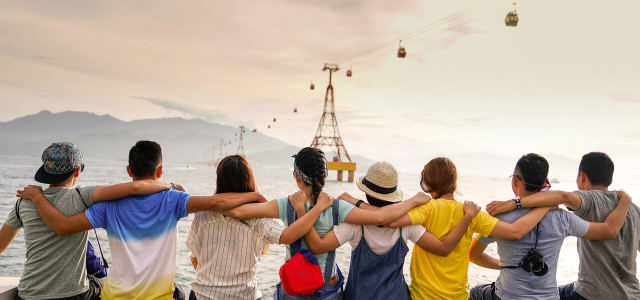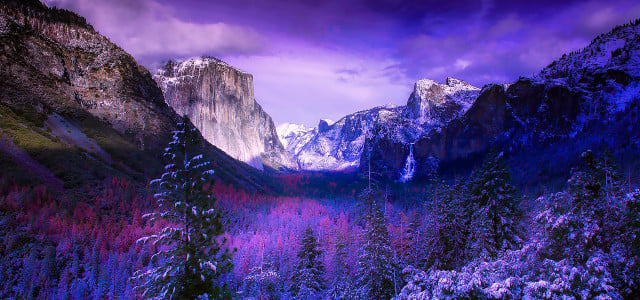Is saving the planet intertwined with issues like race, gender and other inequalities? Intersectional environmentalism says yes. Read on to find out more about these connections.
To understand intersectional environmentalism, it’s important to know what the term “intersectional” means and how various elements of life on Earth intertwine. Intersectionality can be described as:
“A way of examining issues to understand how characteristics such as race, place, age, gender and geography intersect with each other and interact with power structures to create and reinforce power, privilege, disadvantage and discrimination.”
The concept of intersectionality was first defined by academic and feminist Kimberlé Crenshaw in 1989, when she discussed how the oppression endured by Black women was an intersectional experience involving race and gender, among other factors.
Intersectional environmentalism refers to how these issues and injustices intersect with — or are related to — eco-protection and environmentalist approaches. Understanding how environmentalism affects different groups of people is key to developing an equal, healthy and sustainable planet.
Intersectional Environmentalism
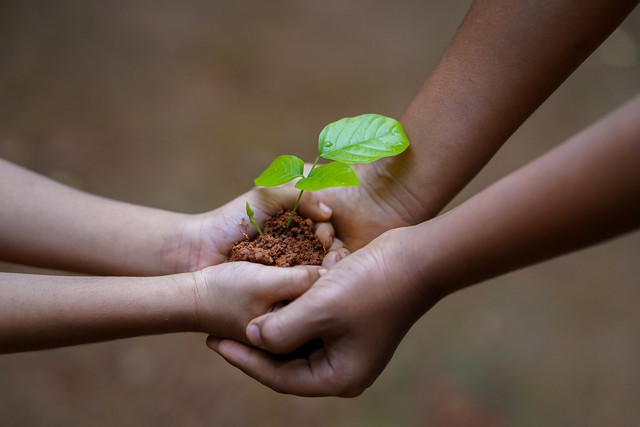
(Foto: CC0 / Pixabay / shameersrk)
You may already know that environmental destruction and decay hurt marginalized communities, a concept increasingly referred to as environmental racism. Did you know that efforts to save the planet can have equally devastating effects on these communities?
Leah Thomas (also known as Green Girl Leah) is a prominent intersectional environmentalist in the US. Speaking to the Columbia Climate School, she describes environmental justice as “an inclusive version of environmentalism that advocates for both the protection of people and the planet.”
She notes that until the 1980s, environmentalism was primarily associated with white, middle and upper-class movements. She also highlights the importance of including social justice in environmental programs. The reality is that the climate crisis has been caused primarily by white people but disproportionately affects people of color.
Environmental Injustice



(Foto: CC0/ Unsplash/ Sushil Nash.)
Intersectional environmentalism is all about the parallels between injustices against the planet and injustices against people — particularly Black, Indigenous and people of color (BIPOC), people with disabilities and those living in poverty and less advantaged areas.
Those campaigning for an intersectional approach to environmentalism argue that:
- Communities of color are impacted the most by environmental injustices
- Communities of color are leading the way in creating solutions to the environmental crisis, and
- When these communities are part of environmental decision-making, movements, and educational systems, environmentalism will be improved, more equitable and more revolutionary for all
According to the Environment 911 movement, along with many others, people who are Black, Indigenous or come from disadvantaged communities are more likely than white people to feel the effects of environmental decay. These communities:
- Endure problems like poor air quality, limited access to clean drinking water and an increase in respiratory illnesses in children
- Are also more likely to reside in areas with environmental hazards, such as garbage dumps, toxic waste sites and factories spewing pollutants into the air and water
The Princeton Student Climate Initiative reports similar findings. They highlight that government and organizational responses to environmental hazards and issues vastly differ between communities of various races and ethnicities. Intersectional environmentalism is a big deal. According to their report:
- People of color are more vulnerable to heatwaves, extreme weather events, environmental degradation and subsequent labor market dislocations
- African Americans face a cancer risk above the EPA’s level of concern due to unclean air
- African Americans are 75% more likely than white people to live in “fence-line” communities (areas near commercial facilities that produce noise, odor, traffic or emissions that directly affect the population)
- Ocean acidification risks are amplified in communities such as coastal Native American tribes, whose diet and economy rely on seafood
- White counties have seen an increase in average wealth after natural disasters, while predominantly minority counties saw a wealth decrease
- White communities saw higher levels of reinvestment in their communities after natural disasters compared to their minority counterparts
- Lower income levels, limited access to education and poorer health status are more prevalent in African American communities than in white communities.
- The historical discriminatory practices in housing, education, employment and healthcare all play a role in these inequalities and contribute to greater vulnerability to climate impacts
The evidence strongly supports an intersectional relationship between racial, social and environmental injustice. The reality is that these intersections persist when we look at many environmental solutions.
Planet vs. People
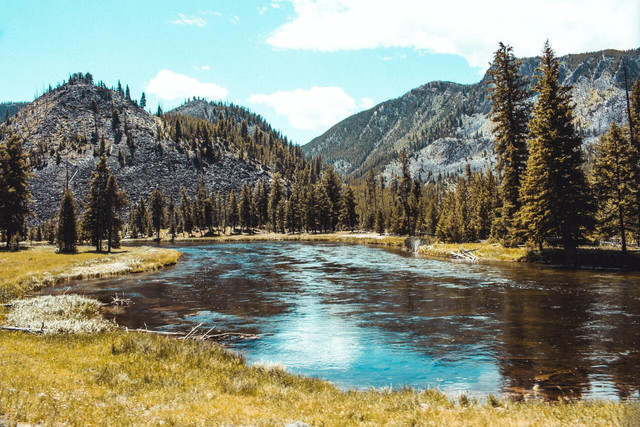


(Foto: CC0/ Unsplash/ Austin Farrington.)
Conservation and preservation are terms you probably associate with positive environmental outcomes. But do you associate them with human rights violations, rape and torture? Intersectional environmentalists certainly do.
Conservation and preservation efforts are guiding solutions to ecosystem collapse, and threats to biodiversity — problems the 2018 Global Risks Report indicates have worsened by 8.4 percent since the Covid-19 pandemic. These issues are also a leading cause of human rights abuses globally.
The Convention on Biological Diversity recommends that at least 30 percent of global land and sea be conserved by 2030 and recommends increasing financial investment, including a 10 billion dollar sum towards assisting developing countries.
Fortress conservation is a popular approach. It advocates for creating protected areas of natural land, like national parks, free from humans to promote a thriving ecosystem. That is, diverse ecosystems that are unspoiled and untainted by human activity. Today, roughly 400 national park sites span over 84 million acres of American territory. Sounds idyllic — right?
Not quite. Fortress conservation is founded on the forcible displacement of humans native to the lands being conserved. The practice actually started in the US. In the 1800s, Major James Savage began driving the native Yosemite tribes from what is now known as Yosemite National Park. Indigenous people have been continuously displaced ever since — in the name of the planet (which is somewhat rich, considering.)
In June 2022, reports, photos and videos emerged showing officials opening gunfire on the Indigenous Maasai people in Tanzania, who were protesting the arrival of police and eco-guards to evict them from their homes near the Serengeti National Park. The lands they had occupied for millennia were to be conserved as a game reserve.
Two years earlier, the UN Development Programme launched an investigation after Survival International lodged a formal complaint about atrocities committed by WWF park rangers and eco-guards in the Congo’s Messok Dja region. According to the World Rainforest Movement, park rangers committed atrocities ranging from gang rape to murder and torture.
Many argue for returning national parks to native tribes in the name of justice and environmental health. Tribes and Indigenous communities play a significant role in the natural evolution of their ecosystems by planting seeds, cultivating land, lighting fires and replenishing nutrients in the soil.
Land conservation and preservation are just some of many issues challenging intersectional environmentalism. Check out our deep dive into sugar or our deep dive into cashews to read more about how sustainability, our food chain supply and human rights intersect in similarly negative ways worldwide.
Intersectional Environmentalism on the Horizon



(Foto: CC0 / Pixabay / sasint)
Saving the environment and fighting for civil rights must occur simultaneously to fix our broken systems and ensure our environmentalism is intersectional. The Environmental Protection Agency (EPA) acknowledges that the benefits of environmental improvements have not been distributed equally and that environmental hazards are disproportionately located in BIPOC and low-income communities.
The EPA’s Office of Research and Development is working towards intersectional environmentalism approaches and has identified four core research areas for addressing environmental injustice:
- Developing decision-support tools
- Improving our understanding of environmental health disparities and developing data and methods for assessing cumulative risks
- Supporting Tribal science
- Characterizing climate justice.
Victoria Tauli-Corpuz, UN Special Rapporteur on the Rights of Indigenous Peoples, has spoken out in a special report supporting the inclusion of native people in plans for climate control. Her research shows that Indigenous people and local communities are investing substantially in forest conservation and are achieving at least equal conservation results with only a fraction of the budget of other groups.
The WWF is working with sugar producers from the Global South and the Global North to promote sustainable farm practices through its Action for Sustainable Sugar. This rigorous certification program addresses human health, workers’ rights and environmental health.
Furthermore, US President Joe Biden has placed environmental justice and other issues that disproportionately affect the health of marginalized and BIPOC communities at the top of his domestic agenda.
According to Nature, all eyes are on New Jersey, which enacted the most powerful environmental justice statute in the United States less than four months after Floyd’s death. The statute, crafted with the help of researchers and activists, requires that environmental regulators consider communities’ cumulative burden when issuing permits to facilities that will produce pollution.
Doing Your Part For Intersectionality
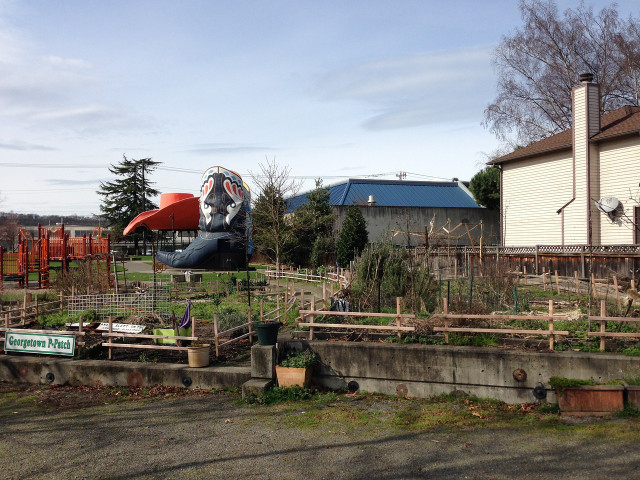


(Foto: CC0 / Pixabay / matisse)
You, too, can become an intersectional environmentalist (if you’re not one already). Rule number one is remembering that we cannot separate people from the environment. Intersectional environmentalism isn’t necessarily about what we do — so much as it is about how and why.
Take agrihoods, for example. The Urban Land Institute describes these established community farms and modern eco villages as intentional developments that incorporate food cultivation into the core of their design. They have brought sustainability and environmental benefits to many areas. However, agrihoods tend to be developed in wealthier areas.
The same principle of incorporating sustainable food cultivation into communities has also been applied to less advantaged areas, like Detroit, one of America’s most dangerous cities. The Michigan Urban Farming Initiative is a non-profit organization bringing sustainable farming to communities that need it most. For nearly 10 years, this group has been redeveloping and cultivating a three-acre area in North Detroit. It has accumulated over 10,000 volunteers, who have grown and distributed more than 50,000 pounds of healthy, organic whole foods to over 2,000 low-income families.
Other programs have also evolved around providing food, including the Forgotten Harvest, the Detroit Black Community Food Security Network and the Detroit Food Academy.
These organizations have implemented truly intersectional environmental actions benefiting planetary and human health. They do not discriminate.
If you would like to bring positive work like that in Detroit to your area, check out how to start a community garden in 8 easy steps and invite all your neighbors to get involved — regardless of sect and standing.
You can also check out some organizations working towards intersectional environmentalism and against justice to learn more about getting involved. Intersectional environmental groups include:
- National Association for the Advancement of Colored People’s
- Equitable and Just National Climate Platform
- Natural Resources Defense Council (NRDC)
- Ironbound Community Corporation
- New Jersey Environmental Justice Alliance
- Intersectional Environmentalist
- Earth Guardians
Read more:
- Tropical Rainforest Ecosystems: Why Are They Important?
- 8 Things You Can Do to Save the Ocean
- Take Action: 15 Everyday Ways to Combat Climate Change
Do you like this post?






